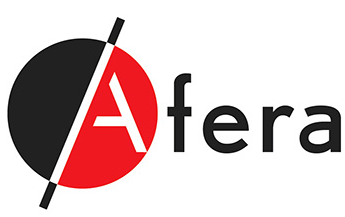
How can suppliers become a real source of value creation?
View the complete slide presentation (members only)
Afera's Hamburg conference presentation series
Gordon Crichton, Director of the Purchasing Management Institute based in Bordeaux, France, recently shared with Afera members and Conference participants the most important lessons for today’s suppliers who want to create value for their manufacturing clients.
Mr. Crichton, who was rated the top speaker of Afera’s event, introduced purchasing as a key element to business innovation through the entire industry chain.
Purchasing used to be about being the best negotiators and getting the best price, especially over counterparts at the direct competition. But the direct competition of manufacturing companies along the adhesive tape value chain is changing, and we can no longer grow our businesses on price alone. The focus is now on growth. Companies have to achieve the right balance of specification and development of market solutions for the end user in order to thrive.
A new customer and supplier interdependence
A revolution in purchasing is underway. In order to succeed, suppliers’ differentiation has to be value creation, which comes from cost-out, innovation and the environment. Now more than ever, product innovation – and in turn business innovation – is travelling up the vertical from strategic suppliers. Manufacturers are redrawing their relationships with suppliers (“SRM”, Supplier Relationship Management), and in many cases, where suppliers used to strive to become “preferred” by their customers, manufacturers are striving to become the “preferred customer” of their suppliers – even offering cash on delivery of their products.
 Getting over “Not Invented Here Syndrome”
Getting over “Not Invented Here Syndrome”
Manufacturers are learning to accept that innovation may come from outside their companies – from their suppliers – and that they need to find a way to bring this in. Purchasing used to be just about cost-out – getting the lowest price from suppliers. Now it is about cost-out further upstream in the development process: reducing and where possible eliminating all unnecessary costs from the system, including over-specification, paperwork and wasted time. Plus value-in: Creating, developing and implementing actions which will enable us to offer added value for the end user’s benefit, including:
- Coordinating multiple sites: Suppliers can help their customers by providing innovation and helping them take it forward within companies with multiple teams spread over various locations.
- Reducing over-specification: Sadly, manufacturers are swimming in this.
- Reducing complexity: How many models, SKUs (stock-keeping units), and references do we need to do the same job? This also involves optimisation of batch sizes, transport, etc.
- Emphasising the functional versus technical spec: Focus on what the part should perform rather than what it should be or look like.

What does this mean for companies in the adhesive tape value chain?
- Companies are evolving incredibly quickly. The client is changing, so we have to change in order to win.
- Change is coming from the top. While middle management are more likely to resist change, those at the CEO-level embrace new information and strategy quickly and want to see change implemented fast.
- This is a fantastic opportunity for suppliers and anyone who can consistently see the big picture. Manufacturers are looking for suppliers who can become a constant source of proposition, suppliers who can become business drivers. Taking the vertical line, suppliers need to understand the business of their customers, and maybe even their customers’ customers.
- Business needs “people” people. Manufacturers need suppliers who can build relationships, people with emotional intelligence. Within their working teams, they have to achieve that balance of those who are analytically bright and those who are emotionally intelligent in order both to see the company’s big picture and to develop and bring the product to market.
- Manufacturers need suppliers – and professionals within their own companies – who dare to be creative, and who understand and expect that the way we do business together tomorrow will be totally different from the way it was done in the past.

The business environment may be changed, more may be asked of purchasers and suppliers, but these shouldn’t be seen as constraints. Today’s tape value chain dynamic offers a mega-opportunity to suppliers and their customers – and their customers’ customers.
About Gordon Crichton
For the past ten years, Gordon Crichton has consulted multinational companies in change management, strategic supplier relationship building and supplier innovation capture initiatives. He is currently Director of the Institut du Management de l’Achat International (MAI). Previous to this, Mr. Crichton was Global Purchasing Director for Consumer Goods at Sony. He has also worked with Ericsson. Mr. Crichton studied electronic engineering at Manchester University before starting his professional activities with the Plessey Group in the U.K. and continuing in ITT.
Questions and comments?
Gordon Crichton
Director of the Institut du Management de L’Achat Industriel (MAI)
Kedge Business School
gordoncrichton@gmail.com
+33 614 04 43 30

